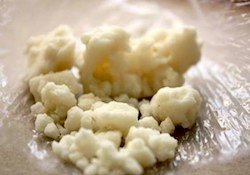
The crack originated in North America and has spread rapidly throughout Europe. The term crack derives from the characteristic noise produced by the substance when it is smoked.
Crack is a synthetic derivative of cocaine, produced by the "freebasing" or "washing" of cocaine hydrochloride with sodium bicarbonate in aqueous solution and is presented in the form of brown flakes with various shades.
Given that crack is a ready-made form of free-based cocaine, users must not buy the tools to transform it and must not expose themselves to the chemical explosions associated with the "freebasing" process: its crystals are directly smoked in special pipes or obtained from plastic bottles or suitably modified cans.
If cocaine has traditionally been a drug for wealthy people due to the high cost of using it, today crack is sold at prices so low that even teenagers can afford to buy it. But this should not be misleading, because when a person becomes addicted to crack, as well as for cocaine, his "needs" grow and with them his expenses.
The crack is often packaged in plastic vials or sachets and sold in small quantities, usually 300-500 mg or sufficient for two or three inhalations. As with all street drugs, what is actually sold may not match what is believed to have been bought. It is therefore difficult to indicate the side effects when the actual content of the substance is not known
In view of the dosage, the negative effects of crack can be:
° Increased heart rate
° Cardiac arrhythmias
° Rapid increase in blood pressure
° Depression
° Convulsions
° Suicidal behavior
° Heart attack
The chances of overdose when smoking crack are much higher than those of cocaine overdose, while its symptoms are comparable to those of cocaine overdose. There are documented death risks both at the first and the hundredth use, or whenever the crack is used.
What is certain is that crack smoking is very harmful. You can die of crack even without overdosing.
The crack, in fact, having a very short active phase is smoked continuously and obsessively (compulsion towards the substance). Its use has been clinically proven to damage the lungs irreversibly in both the short and long term. Pathological effects have been observed on the lungs and bronchi even many months after the last intake of the substance.
From the point of view of the biochemical personality, the crack consumer is exposed to serious risks to his mental health, since crack is a narcotic much more powerful and dangerous than cocaine. Its use, in fact, determines a very rapid psycho-physical habituation; it is also able to generate or accentuate violent instincts. By disinhibiting the main control centers of the central nervous system, the crack leads the person to social alienation, to forms of psychosis and asocial and criminal behavior.